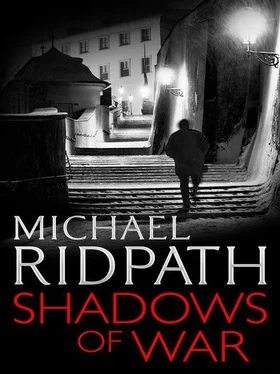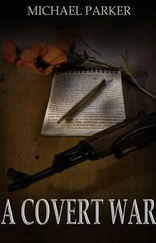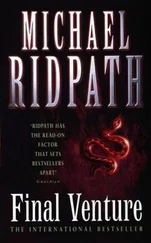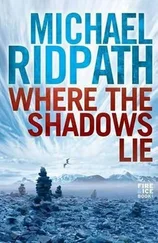The duke and duchess prevaricated, but eventually the duke’s friend and legal adviser Walter Monckton flew out to Portugal and persuaded them to leave Europe. They set sail for the Bahamas on 1 August, where they languished for the remainder of the war.
On 27 August 1940 a notice appeared in the Forthcoming Marriages section of The Times :
LIEUTENANT VISCOUNT OAKFORD AND MISS ROSEN. The engagement is announced between Lieutenant Conrad William Giles, second son of the late Viscount Oakford, G.C.V.O., V.C., M.C., and Lady Oakford of Chilton Coombe, Somerset, and Anneliese Gisela, daughter of Dr Werner Rosen of Douglas, the Isle of Man and Mrs Hilde Rosen of Huyton, Liverpool.
How much of this novel is based on truth?
It’s a fair question, and one that is surprisingly difficult to answer. But I shall try. The historical sources cannot be trusted. The main players had reputations to protect; governments had a war to win. Conspiracy and cock-up walk hand in hand through a jungle of lies, rumour, gossip and fabrication. Conspiracy theorists and many conspiracy novelists love the idea of cold, super-intelligent plotters driven by a thirst for power. There may have been one or two of these around in 1940, like the fictional Sir Henry Alston, but most of the actors were driven by fear, vanity, prejudice and panic.
Nowhere is this more obvious than the vexed question of whether the Duke of Windsor was a Nazi spy.
The idea for this novel first came to me after reading Martin Allen’s stimulating book Hidden Agenda , which makes the forceful case that the Duke of Windsor willingly passed secrets about the French defences to the Germans in the hope of securing a role as King or President of a pro-German Britain. The problem is that some of Mr Allen’s sources are suspect, such as a letter purporting to be from the duke delivered to Hitler in November 1939 by Charles Bedaux. A fascinating article by Ben Fenton in the Financial Times in 2008 points out that twenty-nine forged documents have been inserted into the Public Record Office at Kew, and that these have all been used as source material in three books by Mr Allen. Five of them were cited in Hidden Agenda . It is the only known case of documents being inserted rather than removed from the PRO. At the time of the writing of the article they had only been accessed by Mr and Mrs Allen and by the Foreign Office and MI6. There was a police investigation, but it was dropped. Martin Allen denied any knowledge that these papers were forgeries. Despite this mystery, much of Martin Allen’s argument is supported by more reliable sources quoted elsewhere, and in my mind, many of his points still stand.
The British Establishment was torn over how to treat the Duke of Windsor’s story. On the one hand, they wanted to vilify the man who had given up the throne for the love of a divorced American woman. On the other, they wanted to preserve the reputation of the monarchy. Thus, signs of cover-up are everywhere. Anthony Blunt was sent around Europe in the years immediately after the war in search of German documents relating to the duke. That’s the same Anthony Blunt who was spying for the Soviet Union and who, unlike fellow spies Philby, Burgess and Maclean who were publicly accused as soon as they were discovered, was allowed to continue as the Surveyor of the Queen’s Pictures until he was eventually exposed in 1979.
In September 1954, fearful of leaks by the Americans, the Stationery Office published messages sent by the German ambassador at The Hague in early 1940 to his bosses in Berlin informing them that the Duke of Windsor was unhappy with the British government and willing to impart information on Allied war plans. In 1954 these revelations provoked outrage in Parliament: Captain Kerby, Member for Arundel and Shoreham, asked Sir Winston Churchill, the Prime Minister, why such clearly false allegations had been published by Her Majesty’s Government and whether an apology had been made to the Duke of Windsor. The Prime Minister assured the House that the duke had not raised any objections to the documents’ publication and that the Prime Minister agreed with the duke that the German ambassador’s allegations would be treated with contempt. ‘They are, of course, quite untrue.’ Yes, Prime Minister.
But there are some ‘facts’ on which most historians and biographers can agree, and by listing them baldly, the picture becomes a little clearer.
The Duke and Duchess of Windsor were married at a chateau belonging to Charles Bedaux in 1937. The duke pointed out the weaknesses in the French lines around Sedan in reports to the British general staff in late 1939. The duke dined with Charles Bedaux several times in Paris in autumn 1939. Charles Bedaux visited the Netherlands in the winter of 1939 and 1940 where the British secret service became suspicious of him. The German ambassador to the Netherlands thought the Duke of Windsor was unhappy with the British government and might provide intelligence to the Germans. The Germans changed their invasion plans to attack through the Ardennes rather than central Belgium. Charles Bedaux is mentioned in the Abwehr files as one of their ‘V-Men’; that is, an agent. In 1942 he was arrested by the French in Algeria, and shipped to America, where he committed suicide in 1944 while waiting to be tried for treason. From 1939 to 1940 British intelligence became increasingly concerned about the loyalty of the Duke of Windsor. In the summer of 1940, Winston Churchill, one of the duke’s most loyal supporters when he had been king, insisted that the duke take up the post of governor general in the Bahamas. According to a paper drafted by Lord Lloyd at the time, this was because of fear of the duke’s well-known pro-Nazi attitudes and the possibility of intrigue growing up around him.
There is an absence of conclusive documentary evidence of the duke’s treachery. But there is ample evidence that documents relating to the duke have been hidden or destroyed by the British government.
Was there a conspiracy to overthrow Churchill’s government and replace it with a pro-German puppet government? Another difficult question. There were many Establishment figures who wanted to end the war in 1939–40. These included Rab Butler, Lord Tavistock, Lord Beaverbrook, Richard Stokes, Samuel Hoare, Oswald Mosley, Captain Maule Ramsay, General Ironside, David Lloyd George and, in late May 1940, Lord Halifax. Some simply believed any war was wrong. Some wanted to win the war, but believed facts had to be faced: it was better to negotiate peace terms rather than lose it. And some admired Nazi Germany and preferred her as an ally rather than an enemy. All considered themselves patriots. Some, like Lord Oakford in the novel, were confused by these differing motivations.
The role of Lloyd George is an interesting one. Although seventy-seven, he was the most viable alternative to Churchill, Chamberlain and Halifax as Prime Minister, and indeed had served as such in the First World War. He had visited Hitler in Germany and the Duke of Windsor in the south of France and declared himself an admirer of both. According to his secretary, as quoted by John Lukacs in Five Days in London , the reason he turned down a position in the War Cabinet in the summer of 1940 was that he ‘was not going with this gang. There would be change.’
In France in June 1940, Marshal Pétain became the leader of a French government based in Vichy, which collaborated with Germany. Although vilified by history, at the time the 84-year-old soldier was seen as a true patriot, and a hero of the Great War. If Pétain could become President of Vichy France, it is not beyond the realms of possibility that Lloyd George and the Duke of Windsor could have been prepared to lead an equally subservient Britain.
Читать дальше












